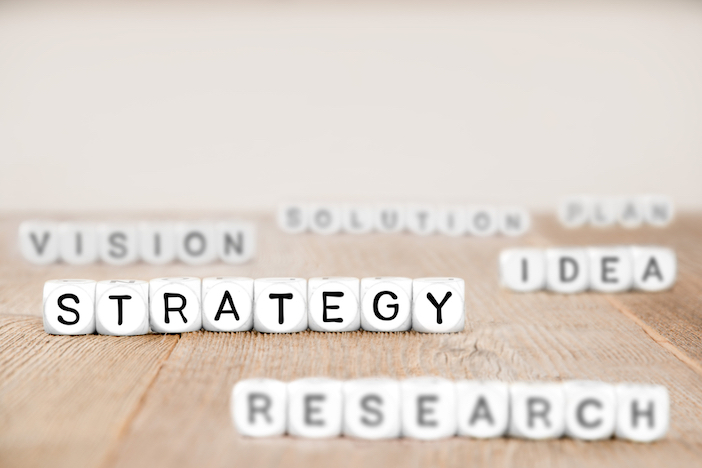Most leaders in the nonprofit space are being asked to be more data-driven by board members and funders, but what does this mean? At a basic level it suggests that the application of data and insights to drive continuous improvement is at the central of determining how the organization approaches decision-making, tracks progress against its mission, and responds to change. These practices are paramount for high-performing social sector leaders—regardless of the number of employees or beneficiaries, budget, mission focus, or geographic reach. But where to begin with measurement and when or how much energy to invest in measurement initiatives can befuddle even the savviest social sector savants.
In this article, we provide a high-level overview of the order and frequency of the various types of measurement, research, and planning. Please note that we present this article with the full understanding that this is what we believe should take place in an ideal world, which we also recognize doesn’t exist, and in fact is precisely why your organization DOES! But we hope that this information gives you a sense of where to take your organization to the next level.
The Order of Performance Measurement Initiatives
- Needs Assessment—When nonprofits first form, the founders have identified a problem they’d like to solve, or a gap in the social fabric of their community that they’d like to fill. But to what extent does the problem or gap exist? What are the demographics of the individuals who need your services most? Do the needs change based on neighborhood, language spoken, or educational attainment? All of this information is crucial to collect to understand the depth and breadth of the problem you are setting out to solve.
- Research, Theory of Change, and Logic Model—
Along with conducting a needs assessment, an organization should conduct research. From secondary data sources, such as census data and white papers to seeking out other organizations that have successfully addressed the same or similar challenge you’re trying to solve, this deeper delve into research provides a broader context and a more nuanced understanding of the challenge you’re trying to address, and will help you to gather examples of best practices from other established organizations.
Before measurement comes into play, an organization should have a theory of change and a logic model in place. A theory of change typically comes in the form of a flow chart, diagram or description, that articulates why the activities your organization plans to conduct will create the change you are hoping to accomplish. It identifies the resources, describes some of the core activities, as well as the anticipated outputs. Finally, it identifies the outcomes you will need to realize in order to accomplish your mission.
A logic model builds on the theory of change, by connecting what your organization has and what it hopes to accomplish. It depicts the relationships among your resources, activities, outputs, outcomes, and impact. Logic models form the framework for measurement. (Measurement Resources uses and recommends that organizations use the W.K. Kellogg Foundation’s template for logic models.
- Program Design—Once you’ve completed a needs assessment, conducted research, developed your theory of change and logic model, then it is time to design your program or services. This should be an iterative process. Pilot, refine, launch, and continue to use data to improve the features and attributes over time, to better meet the unique needs of your beneficiaries.
- Strategic Planning—Your organization’s strategic planning process should incorporate measurable goals around fundraising, revenues, expenses, marketing and mission-related strategic focus areas. In other words, how your organization will resource, communicate and successfully carry out its mission.
- Impact Measurement Framework—Determining the right success measures can make the difference between generating good outputs or achieving great outcomes. Measurement Resources’ High-Performance Measurement Framework™ and real-world approach to implementation make it possible for organizations of all sizes and missions to use measurement to increase their impact – to achieve new efficiencies, uncover revenue sources, and focus their work on the actions that matter most.
- Process Evaluation—A process evaluation is best conducted in the early phases of a new program to capture its attributes, policies, procedures, and other characteristics, and to determine whether or not the program implementation is operationally effective in achieving the anticipated outputs. It also helps to identify the barriers that might be prevent the program’s optimization, and how those barriers can be addressed.
- Impact Evaluation—Throughout a longer-term program’s lifecycle, organizations may conduct impact evaluations at specific intervals. For example, funders of the program might require an evaluation for a given period of time, or the organization may conduct an evaluation based on its fiscal year, etc. For a shorter-term program, an impact evaluation is conducted at the end to measure the degree to which the program met its objectives and resulted in positive outcomes.
- Social Return on Investment Calculation (SROI)—To tackle this calculation, you must first have completed a program evaluation and determine your organizations cost per success. To do this, take your total operational costs and then divide it by the number of people served multiplied by the success rate. Next you need to do some research to determine the total cost to society is an individual is not successful. The final step to calculate your SROI is shown below. The end result is the ability to make powerful statements such as, “For every $1 spent on the organization’s program, the community and its stakeholders will save $6 in the future.” To learn more about SROI, you can read our blog post dedicated to this topic.

The Frequency of Performance Measurement Activities
What follows are our recommendations on the frequency of conducting evaluation, SROI calculations, strategic planning, and needs assessments. That said, we have included some caveats, and again, we understand that for many organizations, this schedule may not be feasible today, but armed with the knowledge of what to strive for, we are confident that your organization can get there.
- Annually:
- Evaluation
- Social Return on Investment Calculation (SROI)
- Three-year Cycles:
Strategic Planning—Ideally, your strategic plan should be strong enough to withstand the turbulence of all manner of external and internal forces that occur. However, there are certainly appropriate situations to break the three-year cycle guideline, such as having a new executive director who wants to infuse her vision into the strategy of the organization. While there are cases to be made to develop a five or even 10-year strategic plan, especially when planning how to resources large-scale investments, for the most part, external forces can change quite a bit in very little time. In our experience, clients produce the best results when working toward goals in shorter, three-year sprints. - Five-year Cycles (or more frequently):
Needs Assessments—Organizations should conduct a Needs Assessments at least every five years, or when a significant opportunity to launch a new initiative presents itself, or when a major trend emerges that will significantly impact the scale of the services you deliver—whichever comes first. For example, COVID-19 triggered the urgency to conduct a needs assessment for many of our clients, so that they could project the increase in demand for their services, and then use those insights to determine how to resource the solutions.
Data All Day Long
Naturally, Measurement Resources advocates that organizations use data daily, throughout the process of iteration and refinement of social sector program design, strategy, and so forth. But doing what is feasible for your organization today, without sacrificing the quality and quantity of the services you deliver, is enough, for today at least. By providing this higher-level overview of how all of the pieces and parts fit together, your organization can envision and aspire to what comes next in the development of your high-performance measurement culture.
Measurement Resources provides fractional performance measurement services to many of our clients, in addition to full-service solutions. Contact us today to learn how Measurement Resources can help your organization advance along the performance measurement continuum.





